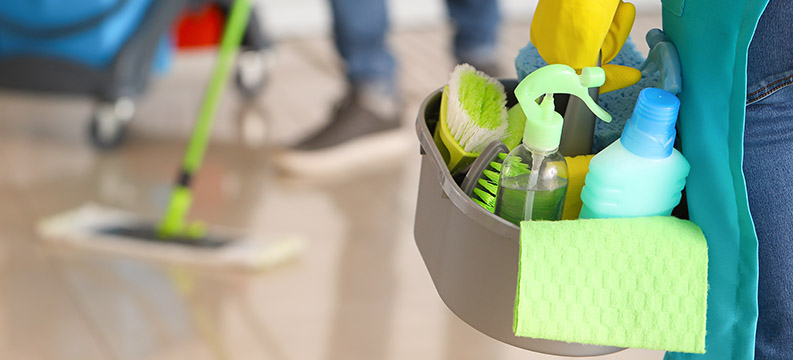As you walk into the facility, the floors appear shiny, the offices neat, the windows clear, and there is a lingering floral scent in the air that to some may be a bit overbearing—but not horribly so. At first, you wonder why you are here since, after months of attempting to get this account to switch to your cleaning contract firm with no luck, the client called seemingly out of the blue and wanting to hear what you have to say.
Once you are in the client’s office, you ask—as any good salesperson would—What are your pain points? What is it that isn’t going to your satisfaction with your current service provider? She answers that she has been experiencing far more than normal absenteeism; it seems every day there are any number of employees out sick. A friend suggested it could be tied to the workplace even though it always looks so clean. She says she is sure there is no connection as the cleaners do a terrific job as you can see but she can’t find any other explanation.
A bell goes off. You ask to see the supply closet. One look at the vast array of chemicals containing toxic ingredients, floral smelling sprays, extra shiny floor polishes and mops sitting in buckets still wet, you realize you are about to win another account based on your company’s simple mantra: Clean for health first, then appearance.
While it is great to have a facility that looks clean, the reality is too often it can be anything but. Don’t get me wrong. Cleaning—removing all visible dirt from a surface with some kind of friction, whether with a sponge, mop, or toweling—is essential. But in today’s world of viruses, bacteria, fungi and other potentially dangerous pathogens that spread like wildfire, removing visible dirt simply isn’t enough. Neither is assuming a facility is clean based on smell, especially when so many scents can actually offend customers and make others wonder what they may be hiding.
Solid Data
According to the U.S. Centers for Disease Control and Prevention (CDC), during the 2017–18 flu season, employee absenteeism increased sharply to a level significantly higher than the average during the previous five seasons.
Meanwhile, research shows that cleaning reduces:
• The probability of catching a common cold or flu by 80 percent
• Virus contamination on surfaces by 62 percent
• Absenteeism by 46 percent.
These reductions sound all the more impressive when one considers the data surrounding sick employees:
•Cold and flu symptoms reduce employee performance by as much as 8 percent.
• The average employee misses nearly eight days of work annually out sick.
• Sick days account for a 54 percent decrease in productivity and a 39 percent decrease in sales and customer service.
• Sick days cost the U.S. economy upwards of $225.8 billion annually.
Of course, colds and the flu don’t only effect businesses. The average elementary school child catches more than eight colds or cases of the flu annually, and 22 million school days are lost each year to the common cold alone. Meanwhile, studies show that professional cleaning not only reduces the health risks of colds and the flu in schools but also improves cognitive function by 6 percent, math scores by 49 percent and reading scores by 27 percent.
And lest we think the only time a clean facility really matters is during cold and flu season, consider, for example:
• Dust exposure effects workers’ cognitive functions by as much as 6 percent as well as causing eye, skin and lung irritation.
•Poor indoor air quality contributes to breathing disorders, such as asthma; diminishes concentration and focus; causes headaches and fatigue; and lowers productivity and increases absenteeism.
•Extended exposure to mold can cause breathing problems as well as sickness and even death in humans.
Making sure a facility is cleaned for the health of its inhabitants and visitors requires balance. It requires using the safest—i.e. “greenest”— formulations for human health and the environment that can effectively do the job. It also means properly using the safest available disinfectants or sanitizers when necessary, including the right formula for the task at hand and following all label directions.
The data is there; it’s up to us to educate our customers on the need to clean for health first, then appearance. Keeping our environments and inhabitants safe and healthier creates a shine all its own.



